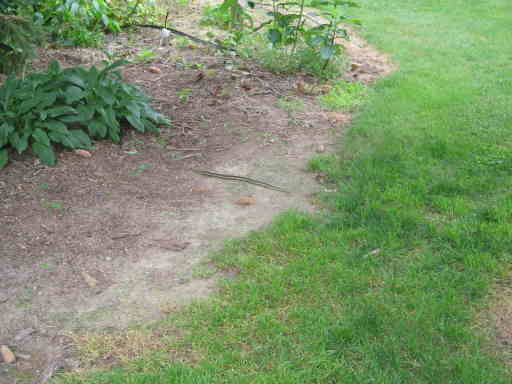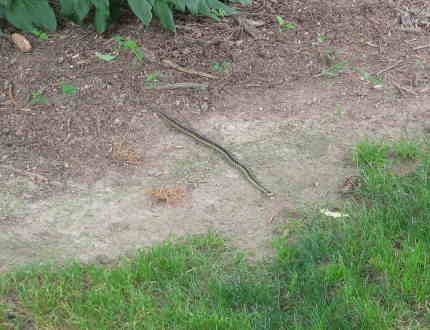![]() Observation: The First Step in the Scientific Method
Observation: The First Step in the Scientific Method
To observe means to look at something and to notice the details. When people observe things they often wonder why it is that way. Scientists try to answer that question. They make observations as the first step to the scientific method.
Observations are also called data. There are two kinds of data.
- Qualitative data which are descriptions that do not have numbers.
The boom and spray of the icy cold, grey-green, storm driven, ocean waves striking the rocky shore at Thunder Hole, Acadia National Park, ME. thrilled the oceanography students.
- Quantitative data are obtained by making measurements and have numbers.
Scientists use instruments (tools) to obtain numbers based data.The ranger explained that, when there is a storm at sea and it is high tide, the waves at Thunder Hole, Acadia National Park, ME. have been known to shoot 12 meters (40 feet) in the air. The temperature of the ocean water at Bar Harbor, ME. varies from a low of 2 Degrees Celsius (°C) in February 2009 to a high of 17.2 Degrees Celsius (°C) in August. Annual weather data for Acadia National Park.
It is important to be a careful observer. The details can be critical to finding the answer to a question.
I was hurrying through the yard when my husband shouted, "Watch your step!"
Make as many observations as you can using the photos.
2. Imagine - If you were standing in the scene:
Wise scientists and naturalists exercise caution.
Identify 3 prudent safety guidelines for this situation.
Using your safety guidelines:
What tools (instruments) would help you to be a better observer?
What measurements would you make?
3. Write at least two questions that you have about what you have observed.
4. Form a hypothesis about what is observed. (What is a hypothesis?)
“The shore has a dual nature, changing with the swing of the tides, belonging now to the land, now to the sea. On the ebb tide it knows the harsh extremes of the land world, being exposed to heat and cold, to wind, to rain, to drying sun. On the flood tide it is a water world, returning briefly to the relative stability of the open sea. Only the most hardy and adaptable can survive in a region so mutable, yet the area between the tide lines is crowded with plants and animals." Rachel Carson
Explore further:
About Units of Measurement - IB Biology | Observing Biology how to's
Temperature facts and figures - IB Biology | Field Notes - Observations in National Parks
Steps of the Scientific Method - Science Buddies | Learn about the Scientific Method
Snakes of North America | IPL - Reptiles & Amphibians | Classification of North American Snakes
Bluebirds Project | Fields, Meadows and Fencerows EcoStudy Unit | Wetlands EcoStudy Unit | Water and Watersheds unit

All trademarks, copyright and logos belong to their respective owners.
Internet Hunts / Nature / Computers / Pennsylvania Projects / Puzzles & Projects / Home Cynthia J. O'Hora Posted 8/2009 released to free use in a nonprofit setting.
Aligned with Pennsylvania Academic Standards | Assessment and Rubrics
![]() Save a tree - use a Digital Answer Format - Highlight the text. Copy it. Paste it in a word processing document. Save the document in your folder. Answer on the word processing document in an easily read, contrasting color or font. (Not yellow ) Avoid fancy fonts like: Symbols, Techno,
Save a tree - use a Digital Answer Format - Highlight the text. Copy it. Paste it in a word processing document. Save the document in your folder. Answer on the word processing document in an easily read, contrasting color or font. (Not yellow ) Avoid fancy fonts like: Symbols, Techno, ![]() fonts). Save frequently as you work. I have never liked losing my work. You will not like it either. Be sure to enter your name & the date at the top of the document. Submit via email attachment or class dropbox. Bad things happen: Save a copy of the response document for your records.
fonts). Save frequently as you work. I have never liked losing my work. You will not like it either. Be sure to enter your name & the date at the top of the document. Submit via email attachment or class dropbox. Bad things happen: Save a copy of the response document for your records.
Proof your responses. It is funny how speling errors and typeos sneak in to the bets work. ![]() Make your own printer paper answer sheet
Make your own printer paper answer sheet
Pennsylvania Academic Standards - The Nature of Science
Processes, Procedures and Tools of Scientific Investigations
• Apply knowledge of scientific investigation or technological design in different contexts to make inferences to solve problems.
• Use evidence, observations, or a variety of scales (e.g., time, mass, distance, volume, temperature) to describe relationships.

